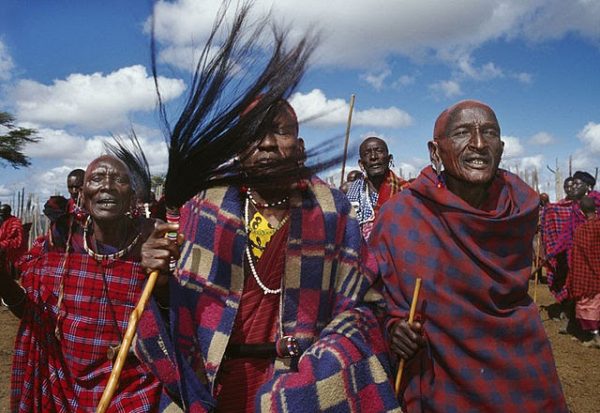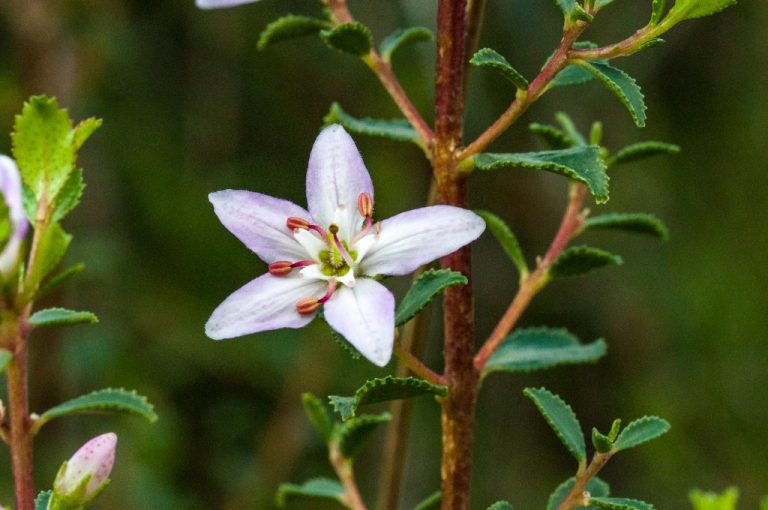South Africa’s “miracle herb,” Agathosma Betulina, or Buchu, is a natural plant resource. Sometimes referred to as “The Cape’s First Doctor,” Buchu is found solely in South Africa’s Western Cape area.
The flowering herb is known for its distinctively sweet, lemony fragrance, its medicinal properties, and its ability to produce superior essential oils. It has been a valuable trading item for centuries, with eight bundles of Buchu leaves cataloged as being on board the doomed Titanic.
A valued member of the Cape’s Floral Kingdom, the shrub is protected by South African National Parks (SANParks), Western Cape Nature Conservation Board (CapeNature) and Eastern Cape Parks and Tourism Agency.
Koisan heritage
Buchu’s medicinal value was first recognized by the Khoisan, a group of non-Bantu indigenous people which includes both San (hunter-gatherers), and the Khoekhoen (herders).
According to archeologists, the Khoisan have lived in South Africa for approximately 2,300 years. Their rock paintings and tools are among the world’s oldest, though much of the rock art remains unidentified on private property, and some have been destroyed with graffiti or stolen and sold to archeological buyers.

Success
You are now signed up for our newsletter
Success
Check your email to complete sign up
Documented records show that the San have a remarkable capacity to thrive in dry or hostile settings, and their animal tracking and hunting skills were superb. Many were expert herbalists who utilized natural remedies to treat and cure a wide range of illnesses.
Buchu as Medicine
Boasting volatile oil (up to 2.5%, containing diosphenol, limonene, menthol, and camphor), Glycoside (barosmin), Flavonoids (including diosmin, rutin, hesperidin, quercetin, and derivatives), mucilage, resin, B vitamins and tannins, the herb’s medicinal value is indisputable.
In Cape medicine, buchu brandy is used as a general tonic, to treat and cure almost any health problem. The herb has been recognized in Europe and North America as well, being applied in various forms for medicinal uses.
Buchu oil has received international acclaim for its anti-inflammatory properties and anti-bacterial, anti-fungal, and antimicrobial agents.
A diuretic tonic of the herb is helpful for many sorts of urinary and gynecological problems, and weight loss as well. It is also believed to be effective in the treatment of rheumatism and gout.
Buchu leaves infused with carrier oil or balm serve as a natural disinfectant and pain reliever, while Buchu in vinegar works as a healing antiseptic on wounds. Herbalists use Buchu to treat premenstrual cramps and bloating.
The herb is also excellent for treating prostate infections, cystitis, gonorrhea, impotence, and low sperm count.
To obtain the natural benefits of the herb, Buchu leaves may be infused into juices or foods, or consumed as a tea. In preserves, added Buchu releases its unique fynbos flavor, a powerful mix of mint and black current.
San cosmology and Buchu
The Khoisan place great emphasis on the sense of smell. Buchu’s strong scent is associated with physical and mental transformation.
According to traditional San folklore, Buchu’s fragrance carries the herb’s medicinal powers to the body through the ears, nose, mouth, and skin pores, encouraging one’s interior body to be in the “right place.”
San herbalists used Buchu not only to alleviate ailments but also to awaken the body by opening the senses. As hunter-gatherers, the San needed to have a heightened awareness; the ability to remain still and receptive to their surroundings. This potent energy mediator was used in aromatherapy and rites.
In his thesis on rock art symbology, Siyakha Mquni suggests that trees and plants act as symbolic cosmic mediators. Khoisan folklore teaches that everything that is created has different degrees of supernatural intensity and that trees and plants are higher beings that make themselves known through their scent.
The Khoisan consider the cosmos a “flow” of energy, as opposed to merely a collection of objects. By letting go of “self,” a merging with that which is beyond self occurs. If Buchu can facilitate this flow, it may be just what humanity needs to see through the confusing and corrupting forces that are breaking down society today.















